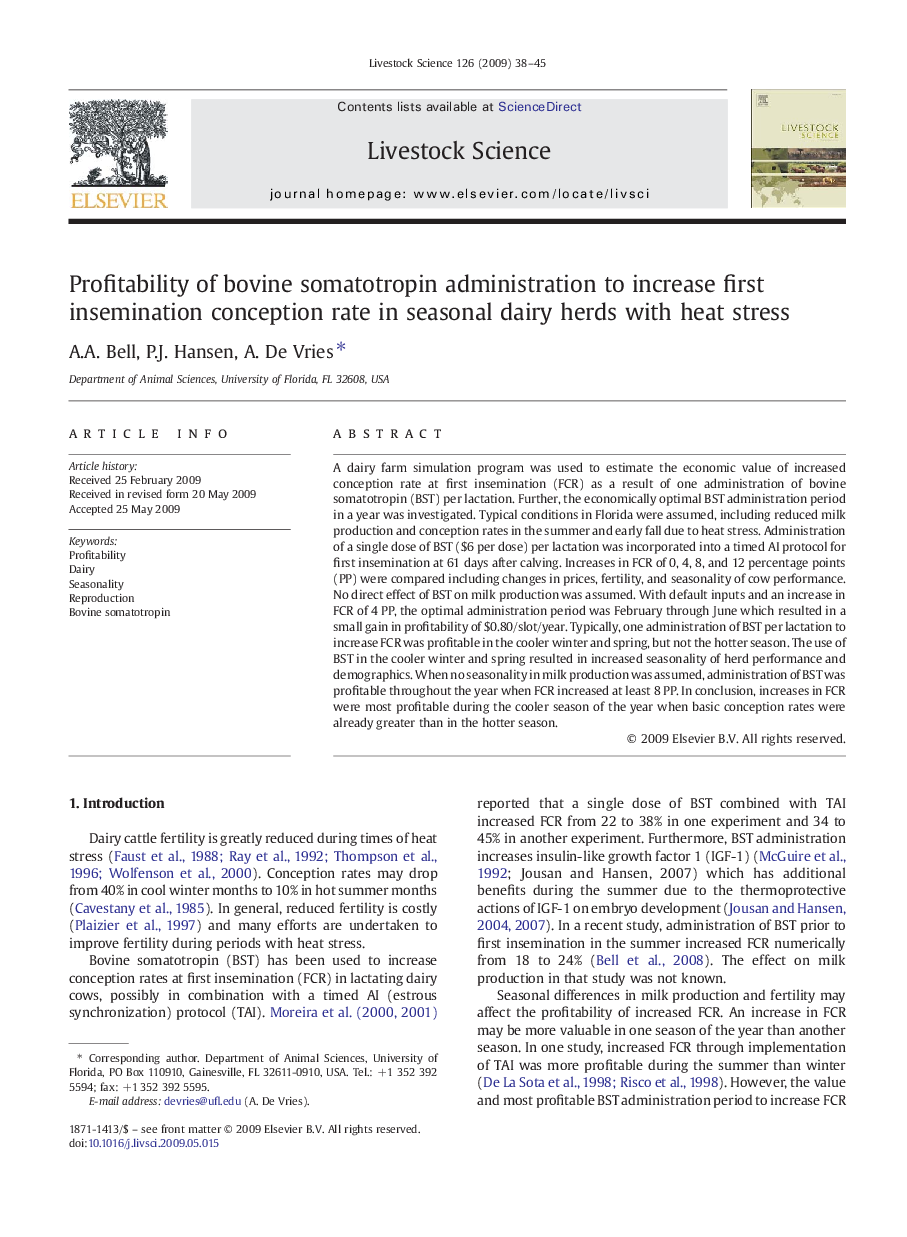| Article ID | Journal | Published Year | Pages | File Type |
|---|---|---|---|---|
| 2447920 | Livestock Science | 2009 | 8 Pages |
A dairy farm simulation program was used to estimate the economic value of increased conception rate at first insemination (FCR) as a result of one administration of bovine somatotropin (BST) per lactation. Further, the economically optimal BST administration period in a year was investigated. Typical conditions in Florida were assumed, including reduced milk production and conception rates in the summer and early fall due to heat stress. Administration of a single dose of BST ($6 per dose) per lactation was incorporated into a timed AI protocol for first insemination at 61 days after calving. Increases in FCR of 0, 4, 8, and 12 percentage points (PP) were compared including changes in prices, fertility, and seasonality of cow performance. No direct effect of BST on milk production was assumed. With default inputs and an increase in FCR of 4 PP, the optimal administration period was February through June which resulted in a small gain in profitability of $0.80/slot/year. Typically, one administration of BST per lactation to increase FCR was profitable in the cooler winter and spring, but not the hotter season. The use of BST in the cooler winter and spring resulted in increased seasonality of herd performance and demographics. When no seasonality in milk production was assumed, administration of BST was profitable throughout the year when FCR increased at least 8 PP. In conclusion, increases in FCR were most profitable during the cooler season of the year when basic conception rates were already greater than in the hotter season.
